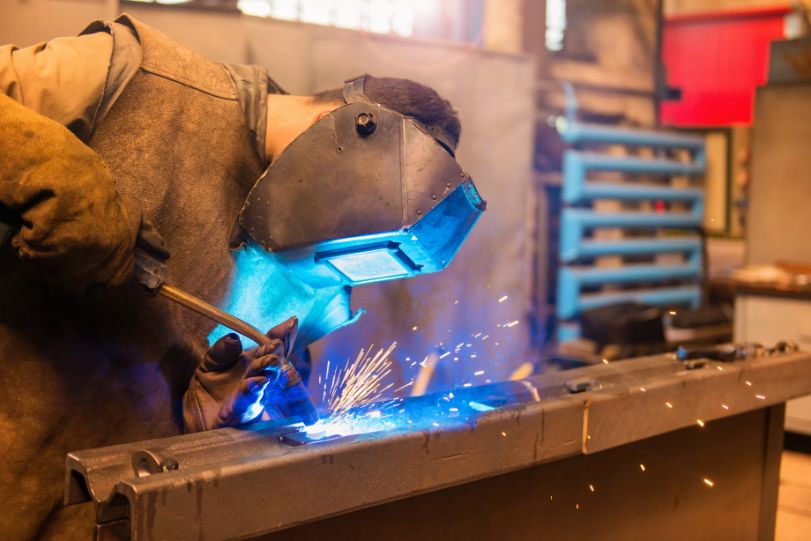Recognizing Welding WPS: Comprehensive Guide for Welders
The Ultimate Overview to Welding WPS Procedures: A Comprehensive Review for Welders
In the elaborate world of welding, Welding Procedure Specifications (WPS) offer as the foundation of making sure high quality, consistency, and safety in welding operations (welding WPS). As we dive into the numerous elements of a WPS and explore the complexities of qualification and qualification, we will reveal the essential duty these treatments play in the realm of welding.
Importance of WPS Procedures
Comprehending the importance of Welding Procedure Requirements (WPS) treatments is essential for guaranteeing the quality and stability of welded structures. WPS procedures act as a roadmap for welders, describing the required steps, criteria, and materials required to attain a sound weld. By adhering to WPS guidelines, welders can make certain uniformity in their job, resulting in dependable and structurally audio welds.
Among the main reasons WPS procedures are vital is their function in keeping weld quality and integrity. Adhering to the specified welding criteria and methods outlined in the WPS assists avoid issues such as porosity, splitting, or insufficient blend, which can jeopardize the strength and durability of the weld. Furthermore, WPS treatments are essential for guaranteeing compliance with sector criteria and codes. By adhering to established WPS guidelines, welders can demonstrate that their work meets the essential requirements for safety and security and quality, giving assurance to clients, assessors, and regulative bodies. Basically, the value of WPS procedures can not be overstated, as they are fundamental to accomplishing regular, top quality welds that satisfy industry requirements and specifications.

Elements of a WPS
A Welding Procedure Requirements (WPS) typically comprises necessary components that information the certain demands for carrying out a weld, guaranteeing uniformity and high quality in the welding process. The crucial components of a WPS consist of essential variables such as base metals, filler metals, preheat and interpass temperatures, welding processes, shielding gases, welding settings, and post-weld warm treatment requirements.
Base metals describe the materials being signed up with, while filler metals are utilized to load the space between the base steels during welding. Preheat and interpass temperatures are essential for managing the warmth input and preventing issues like fracturing or distortion. The welding process outlines the details method to be used, whether it's gas metal arc welding (GMAW), secured metal arc welding (SMAW), or an additional method. Shielding gases safeguard the weld swimming pool from climatic contamination. Welding positions specify the alignments in which welding can be performed. Post-weld warm therapy might be essential to relieve tensions and enhance the weld's residential or commercial properties. An extensive understanding of these components is critical for developing a thorough and reliable WPS.

Certification and Accreditation
Having actually developed the important parts of a Welding Treatment Requirements (WPS), the emphasis currently shifts towards the essential elements check that of certification and accreditation in welding methods.

Certification, on the other hand, is the formal recognition of a welder's credentials by a relevant qualification body or organization. Welding accreditations are typically based upon the specific welding procedures, products, and positions a welder is certified to deal with. Holding a legitimate welding certification shows that a welder fulfills sector requirements and is qualified to execute welding tasks to the required specs.
Developing a WPS
To create a Welding Procedure Spec (WPS) that satisfies sector criteria, careful consideration of welding processes, products, and functional criteria is essential. The first action in creating a WPS is to recognize the welding process to be made use of, such as gas steel arc welding (GMAW) or secured steel arc welding (SMAW)

Implementing and Keeping Track Of WPS
Upon wrapping up the extensive Welding Treatment Spec (WPS) that diligently information welding procedures, materials, operational specifications, and quality control steps, the focus shifts to efficiently carrying out and keeping an eye on the well-known procedures. Execution entails ensuring that all welders entailed in the job know with the WPS and follow it carefully during the welding that site process. This needs supplying sufficient training and guidance to guarantee adherence to the defined procedures. Monitoring the WPS involves constant oversight to validate that welding activities straighten with the documented requirements. Examinations, screening, and quality control measures are vital components of the tracking procedure to recognize any kind of concerns or inconsistencies immediately. Normal audits and testimonials of the welding treatments you can check here assist in maintaining uniformity and high quality throughout the job. Reliable execution and surveillance of the WPS are critical for ensuring the stability, strength, and safety of the welded joints, ultimately contributing to the general success of the welding job.
Final Thought
In verdict, understanding and complying with Welding Treatment Specs (WPS) is essential for welders to guarantee top quality, consistency, and security in their job. By understanding the parts of a WPS, obtaining appropriate credentials and accreditations, creating thorough treatments, and carrying out and monitoring them properly, welders can boost their abilities and efficiency in welding methods. Sticking to WPS treatments is important for producing high-quality welds and meeting industry requirements.
In the elaborate world of welding, Welding Procedure Specs (WPS) offer as the foundation of making sure high quality, uniformity, and safety and security in welding operations. The welding procedure lays out the certain technique to be utilized, whether it's gas metal arc welding (GMAW), protected steel arc welding (SMAW), or an additional method.To create a Welding Treatment Specification (WPS) that meets market requirements, careful consideration of welding processes, products, and functional criteria is crucial. The first step in producing a WPS is to determine the welding procedure to be used, such as gas steel arc welding (GMAW) or secured metal arc welding (SMAW)Upon completing the comprehensive Welding Procedure Requirements (WPS) that thoroughly details welding processes, products, operational parameters, and high quality guarantee measures, the emphasis changes to successfully carrying out and keeping track of the well-known treatments.